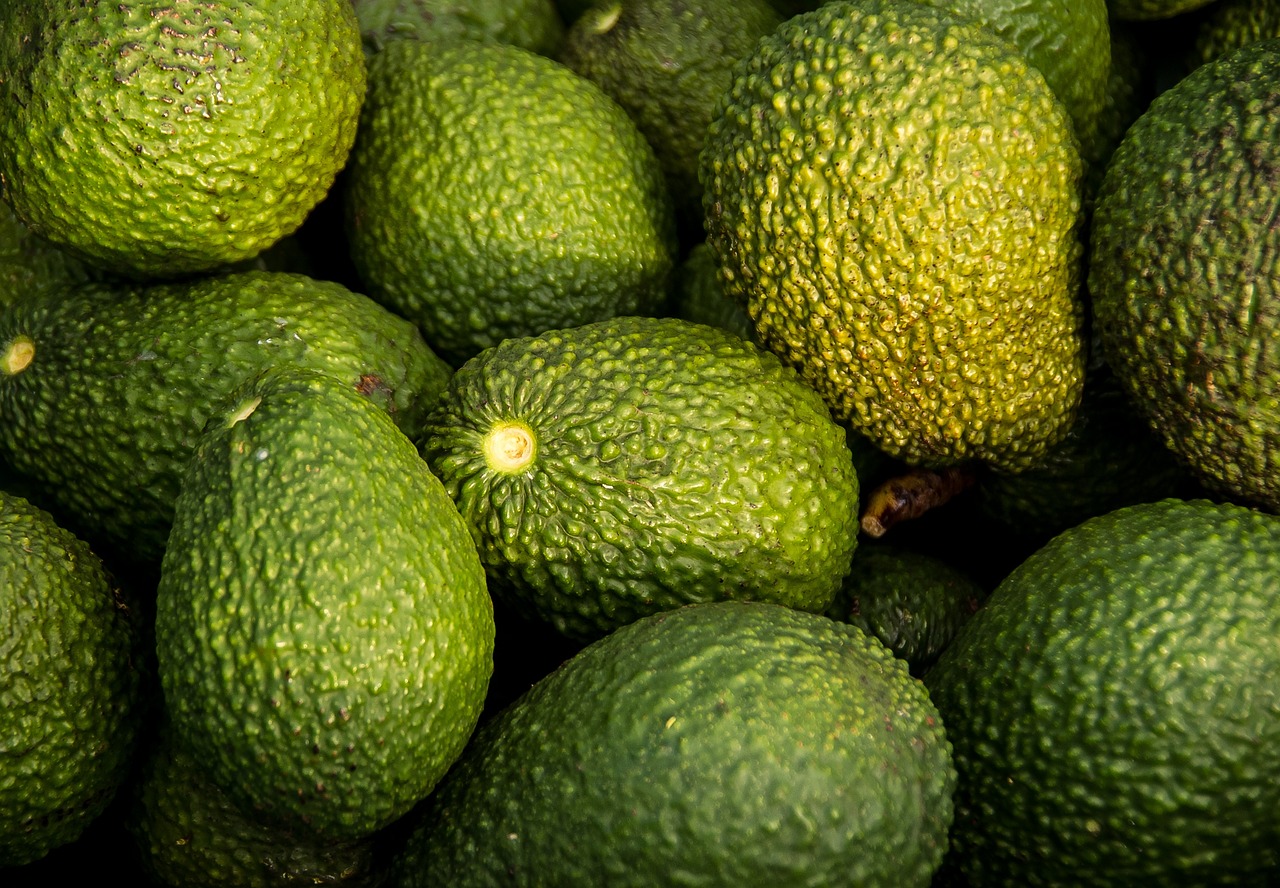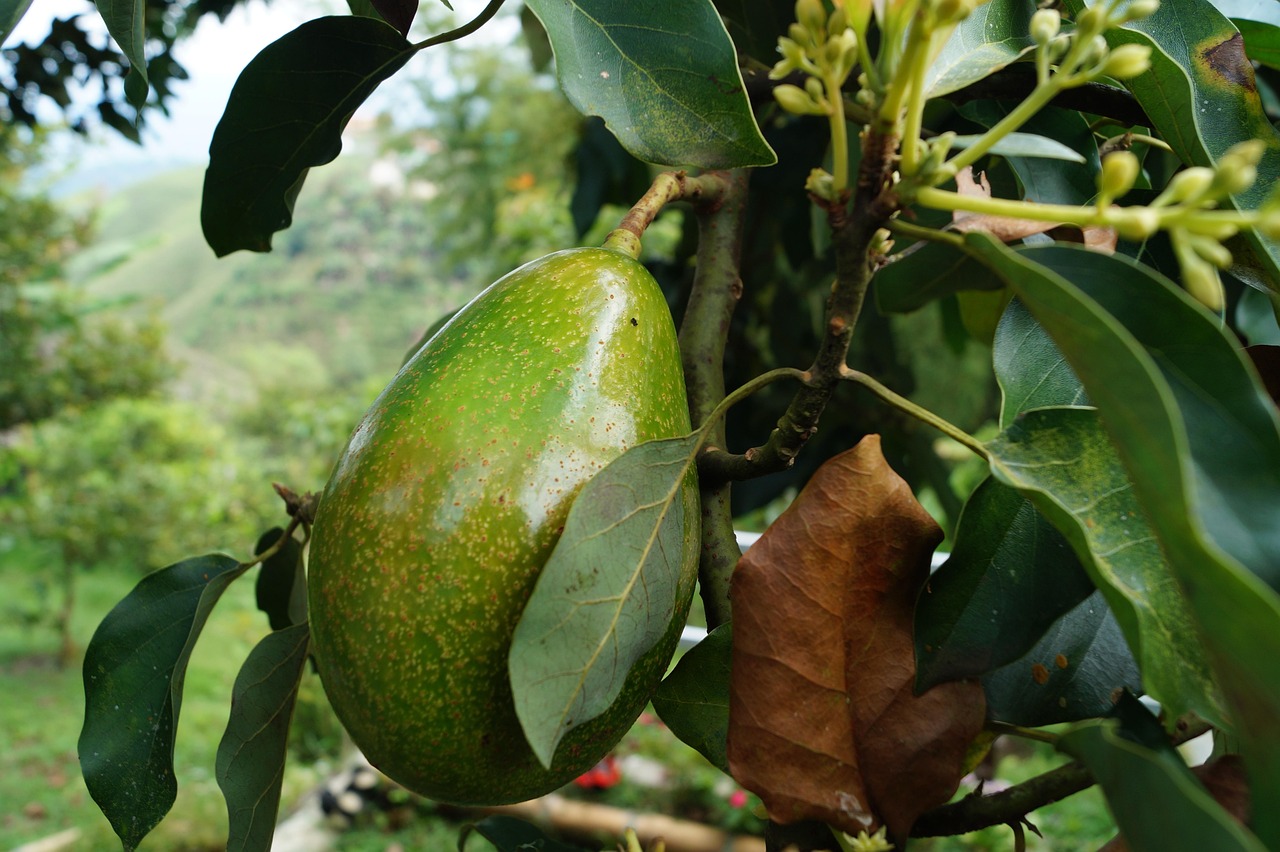Summer pruning for avocado trees in tropical zones is essential for maintaining tree health, improving fruit quality, and maximizing sunlight exposure. Proper techniques ensure robust growth while preventing disease and promoting better airflow through the canopy.
Avocado trees thrive in tropical climates, where warm temperatures and ample rainfall create ideal growing conditions. However, these trees require careful management to ensure they produce high-quality fruit. One of the most effective ways to achieve this is through summer pruning. This practice not only shapes the tree for optimal growth but also enhances its overall health.

Summer pruning is typically done during the active growing season, when the tree is flush with new growth. This timing allows for better healing and reduces the risk of disease. In tropical zones, where growth can be vigorous, regular pruning helps control the size of the tree and encourages a more manageable structure. A well-pruned avocado tree can yield higher quantities of fruit that are not only larger but also of better quality.
Benefits of Summer Pruning
There are several key benefits to summer pruning avocado trees in tropical zones. These include:
- Improved Sunlight Penetration: Pruning opens up the canopy, allowing sunlight to reach more leaves. This is crucial for photosynthesis and overall tree vigor.
- Enhanced Air Circulation: By thinning out dense areas, air can circulate more freely. This helps reduce humidity levels around the leaves, minimizing the risk of fungal diseases.
- Better Fruit Quality: With improved light and airflow, the fruits can develop more evenly, making them larger and tastier.
- Controlled Size and Shape: Regular pruning keeps avocado trees at a manageable height and shape, making harvesting easier.
- Increased Yield: A well-pruned tree can produce more fruit due to enhanced growth conditions.
Understanding the right techniques for summer pruning is essential for achieving these benefits. It’s important to know when to prune and what parts of the tree to focus on. Proper techniques can help prevent stress to the tree, ensuring that it remains healthy and productive.

When to Prune
The best time to prune avocado trees in tropical zones is during the summer months. This is typically when the tree is actively growing. The exact timing may vary depending on local climate conditions, but generally, pruning should occur after the last frost and before the hottest part of summer.
Pruning during this time allows for quick recovery from cuts. The tree will naturally seal wounds faster when it is growing vigorously. Waiting until late summer or early fall may result in slower healing, increasing the risk of disease entering through open cuts.
Pruning Techniques
Employing effective pruning techniques is crucial for achieving the desired results. Here are some recommended methods:

- Thinning Cuts: Remove some branches entirely to open up the canopy. This encourages light penetration and airflow.
- Heading Cuts: Trim back the tips of branches to stimulate lateral growth. This can help control height and encourage bushier growth.
- Removing Dead or Diseased Wood: Always remove any dead or diseased branches as soon as they are noticed. This helps maintain tree health and prevents the spread of disease.
- Avoiding Over-Pruning: Limit your cuts to no more than 25% of the tree’s total foliage in one season. Over-pruning can stress the tree.
Using clean, sharp tools is essential for making precise cuts. This minimizes damage to the tree and promotes faster healing. Additionally, disinfecting tools before use can help prevent the spread of any pathogens that might harm your avocado tree.
Common Mistakes to Avoid
While pruning is beneficial, there are common pitfalls that gardeners should avoid:
- Pruning at the Wrong Time: Avoid pruning during dormancy or late fall when the tree is preparing for rest.
- Neglecting Tree Health: Always assess your tree’s health before pruning. If it shows signs of stress or disease, consult an expert before proceeding.
- Lack of Planning: Have a clear plan in place before starting. Know which branches need to be removed to achieve your goals.
By following these guidelines, you can ensure that your avocado trees remain healthy and productive throughout their growing season in tropical zones.

Pruning Tools and Techniques
Choosing the right tools for summer pruning is essential for effective results. Each tool serves a specific purpose and ensures that cuts are clean and precise. Here are some of the most commonly used tools for pruning avocado trees:
- Hand Pruners: Ideal for small branches, hand pruners are perfect for making clean cuts without damaging surrounding tissue.
- Loppers: Loppers have long handles that provide leverage for cutting thicker branches. They are suitable for branches that are too thick for hand pruners.
- Pruning Saws: For larger branches, a pruning saw is necessary. These saws are specifically designed to cut through wood efficiently.
- Pole Pruners: When dealing with higher branches, a pole pruner can be very useful. This tool allows you to reach and cut branches without the need for a ladder.
- Gardening Gloves: Always wear gloves to protect your hands from cuts and scratches while pruning.
Using the right tools not only makes the job easier but also enhances the overall health of your tree. Dull or improper tools can cause jagged cuts, which may lead to infections or diseases.
How to Prune Different Parts of the Tree
Understanding how to prune different parts of the avocado tree is vital for effective summer pruning. Each part may require a different approach:
Canopy Management
The canopy of the avocado tree is where most of the fruit production occurs. Proper management of the canopy ensures that sunlight penetrates effectively. Here’s how to manage it:
- Identify Overgrown Areas: Look for areas where branches are dense. These should be thinned out to improve light and airflow.
- Remove Suckers: Suckers are shoots that grow from the base of the trunk or roots. These should be removed as they can divert energy away from fruit production.
- Thin Out Crowded Branches: Remove branches that cross each other or are too close together. This reduces competition for light and nutrients.
Lower Branches
Lower branches can sometimes hinder access to fruit. When pruning these branches, consider the following:
- Remove Unproductive Branches: If a lower branch is not producing fruit, it may be better to remove it entirely.
- Cut Back to a Healthy Bud: When shortening lower branches, always cut back to a healthy bud to encourage new growth.
Dead or Diseased Wood
Identifying and removing dead or diseased wood is crucial for preventing issues later on. Follow these steps:
- Inspect Regularly: Check your tree frequently for any signs of disease or decay.
- Make Clean Cuts: Use sharp tools to remove dead or diseased branches entirely, cutting back to healthy wood.
- Disinfect Tools: After cutting away diseased wood, disinfect your pruning tools before moving to another part of the tree.
Post-Pruning Care
After pruning, it is important to take steps to care for your avocado tree. Proper post-pruning care encourages recovery and enhances growth:
- Watering: Ensure your tree receives adequate water after pruning. This helps with recovery and supports new growth.
- Nutrient Boost: Consider applying a balanced fertilizer to provide the necessary nutrients for vigorous regrowth.
- Avoid Fertilizing Too Soon: Wait a couple of weeks after pruning before applying fertilizer to avoid stressing the tree.
Pest and Disease Management Post-Pruning
Pests and diseases can become more problematic after pruning due to exposed cuts. Here are ways to manage these risks:
- Monitor for Pests: Keep an eye out for common pests such as aphids or scale insects after pruning. Early detection can prevent infestations.
- Inspect for Fungal Infections: Fungal diseases can enter through cuts. Look for any unusual discoloration or growths on the tree.
- Use Organic Treatments: If pests or diseases are detected, consider using organic treatments like neem oil or insecticidal soap.
Caring for your avocado tree after pruning is just as important as the pruning process itself. By implementing these strategies, you can help ensure your tree remains healthy and productive throughout its growing season in tropical zones.
Understanding Avocado Tree Growth Patterns
To effectively prune avocado trees, it is important to understand their growth patterns. Avocado trees exhibit unique growth habits that can influence the timing and technique of pruning. Recognizing these patterns can lead to better management practices.
Growth Phases of Avocado Trees
Avocado trees typically undergo several distinct growth phases, each requiring different care and attention:
- Initial Growth Phase: In the first few years after planting, avocado trees focus on establishing a strong root system. During this phase, minimal pruning is recommended.
- Vegetative Growth Phase: After the initial establishment, trees enter a vigorous growth phase, producing new leaves and branches. This is the ideal time for summer pruning.
- Flowering and Fruiting Phase: Once trees mature, they begin to flower and produce fruit. Pruning during this phase should be minimal to avoid disrupting fruit development.
Understanding these growth phases helps homeowners plan their pruning activities accordingly, ensuring optimal health and productivity of their avocado trees.
Timing for Summer Pruning in Tropical Zones
While summer is the primary season for pruning avocado trees, the specific timing can vary based on local climate conditions. Here are some guidelines to help determine the best time for summer pruning:
- Post-Rainy Season: In tropical regions, it is beneficial to prune shortly after the rainy season when new growth begins. This allows the tree to recover quickly with sufficient moisture.
- Before Flowering: Pruning too close to flowering can lead to reduced fruit set. It is best to complete pruning at least a month before flowering begins.
- Temperature Considerations: Avoid pruning during extreme heat or drought conditions, as this can stress the tree and inhibit recovery.
Monitoring local weather patterns can provide valuable insight into the best timing for your specific location.
Types of Avocado Trees and Their Pruning Needs
Different varieties of avocado trees may have unique pruning requirements based on their growth habits and fruiting characteristics. Here are some common types of avocado trees and their specific needs:
| Type of Avocado | Description | Pruning Needs |
|---|---|---|
| Hass | The most popular avocado variety, known for its creamy texture and rich flavor. | Moderate pruning to maintain shape; focus on thinning out dense areas. |
| Fuerte | A hybrid variety that produces smooth-skinned fruit with a mild flavor. | Light pruning; avoid heavy cuts since it can impact fruiting. |
| Bacon | A cold-hardy variety that produces medium-sized fruit with a smooth skin. | Regular maintenance; prune to enhance airflow and remove suckers. |
| Lamb Hass | A hybrid similar to Hass but with a slightly larger fruit and different harvesting season. | Moderate pruning; essential to manage height for easy harvesting. |
Knowing the specific variety of your avocado tree allows you to tailor your pruning approach effectively for improved yield and health.
Encouraging Fruit Production through Pruning
Summer pruning not only shapes the tree but can also encourage better fruit production. Here are some strategies to maximize fruit yield:
- Encourage Lateral Growth: By cutting back main branches, you can promote the growth of lateral shoots which tend to bear more fruit.
- Avoid Overcrowding: Ensure there is enough space between branches. This encourages better air circulation and light penetration, vital for fruit development.
- Focus on Young Wood: Newer wood produces better fruit. Prioritize pruning older branches that have become less productive.
The goal is to create an open structure that enables sunlight to reach as many leaves as possible, thus enhancing photosynthesis and fruit development.
Long-Term Pruning Strategies
In addition to summer pruning, developing long-term strategies is essential for maintaining healthy avocado trees over the years. Consider these practices:
- Establish a Pruning Schedule: Create a regular schedule for pruning that includes both summer and winter maintenance. Consistency leads to better tree structure.
- Create a Monitoring Plan: Regularly check for signs of disease or pest infestations. Early detection can save your tree from severe damage.
- Adapt Techniques as Needed: Be flexible in your approach. Assess how your tree responds to pruning and adjust techniques based on its growth and health.
A proactive approach ensures that your avocado trees remain productive and healthy throughout their lifespan, providing bountiful harvests year after year.
Additional Considerations for Summer Pruning
In addition to the previously discussed practices, there are several other considerations that can enhance the effectiveness of summer pruning for avocado trees. These factors can help you achieve the best results and maintain a healthy tree.
Soil Health
Healthy soil is vital for robust tree growth. Good soil management practices can significantly impact an avocado tree’s ability to recover from pruning:
- Regular Soil Testing: Conduct soil tests to determine nutrient levels and pH. This information can guide fertilization and soil amendments.
- Organic Matter Addition: Incorporate organic materials, such as compost, into the soil. This improves soil structure, drainage, and nutrient availability.
- Avoid Overwatering: Ensure proper drainage to prevent root rot. Overwatering can weaken the tree and make it more susceptible to disease.
Mulching
Applying mulch around the base of avocado trees offers several benefits:
- Moisture Retention: Mulch helps retain soil moisture, reducing the need for frequent watering.
- Weed Suppression: It prevents weed growth, which can compete for nutrients and water.
- Temperature Regulation: Mulch helps regulate soil temperatures, creating a more favorable environment for root growth.
Organic mulches, such as wood chips or straw, are recommended as they decompose over time, further enriching the soil.
Community Resources and Support
Engaging with local gardening communities and agricultural extension services can provide invaluable support:
- Workshops and Seminars: Many local agricultural organizations offer workshops on pruning techniques and tree care.
- Networking with Other Growers: Connecting with other avocado growers can provide insights into best practices and local challenges.
- Access to Experts: Local horticulturists can offer tailored advice based on your specific growing conditions.
Utilizing available resources can enhance your knowledge and improve the health of your avocado trees.
Final Thoughts
Summer pruning is an essential practice for maintaining the health and productivity of avocado trees in tropical zones. By understanding the growth habits of these trees, choosing the right tools, and employing effective pruning techniques, you can ensure optimal fruit production and tree health. Regular monitoring and proper post-pruning care further contribute to the success of your avocado cultivation efforts.
The key takeaways from this article include establishing a consistent pruning schedule, understanding the specific needs of different avocado varieties, and engaging with community resources for support. Additionally, maintaining healthy soil and using mulch can create a thriving environment for your trees. With these strategies in place, you can enjoy bountiful harvests of delicious avocados year after year.
As you continue on your journey of growing avocado trees, remember that patience and observation are crucial. Each tree is unique, and adapting your practices based on its responses will lead to long-term success in your gardening endeavors.
